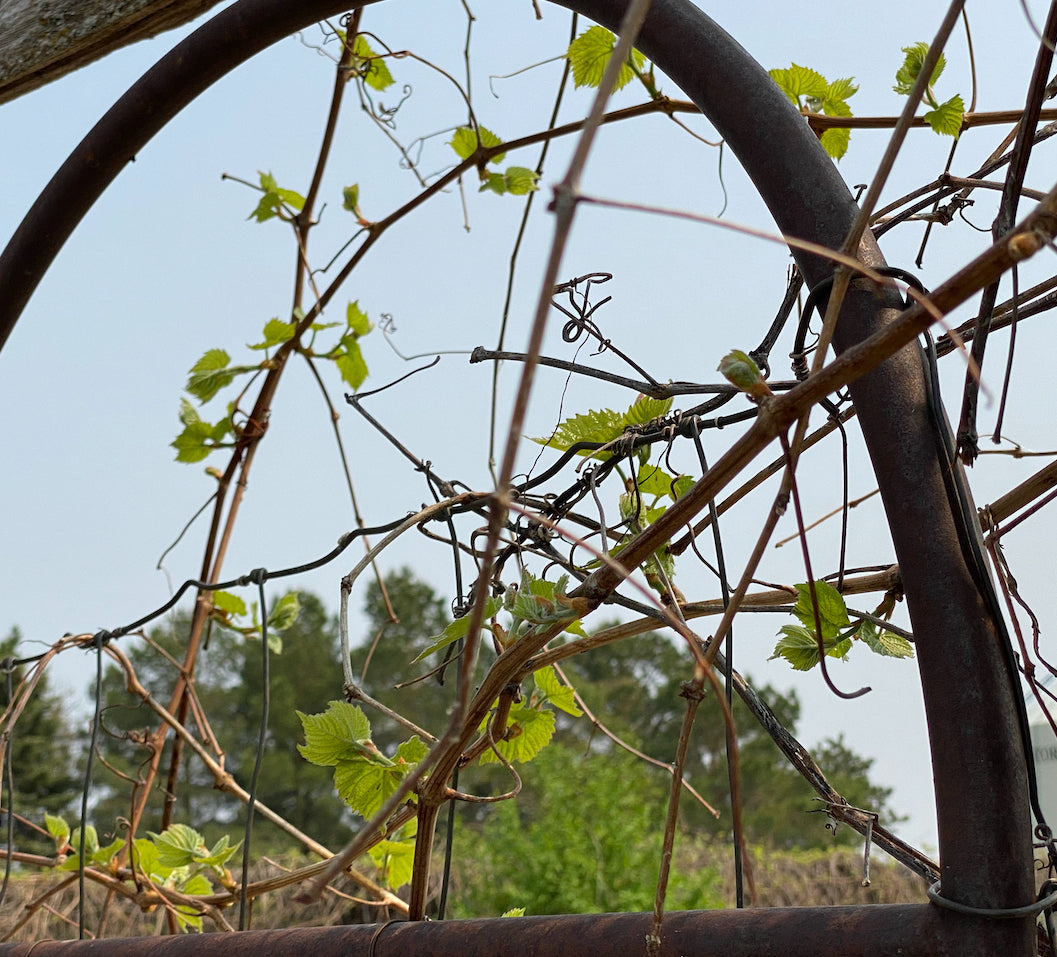
NEW June Checklist: You're on time and gardening like a pro
Share
As Northern gardeners, we like to squeeze as much as we can from our growing season. If you haven’t already, get your radish, beets, carrots, beans, parsnips and potatoes planted. Then continue planting straight through June!
Here’s your June Garden Checklist:
• The warm weather is perfect for sowing summer favorites like zucchini, cucumbers, summer and winter squash, popcorn and corn.
• Time to harden off and transplant those tomatoes, peppers, herbs, and flowers you’ve been nursing along! Get those babies in the ground! That’s always a huge sigh of relief!
 Let's get those babies in the ground! 🙌🏻
Let's get those babies in the ground! 🙌🏻
• Get in there and do some succession planting. Find those gaps! Tuck in fast growing harvestable greens wherever you can. Let’s keep a steady supply of leafy greens— those quick to harvest leaves! Plant more lettuce, the ultimate space filler! Lettuce can be harvested at nearly any stage. Sow into free spots vacated by harvested radishes. Tuck some in where they’re shaded to keep them growing sweet and fresh into the summer heat.
• Succession plant cilantro every other week for a steady supply throughout the summer. Tuck in at the base of your tomato plants to harvest along with your tomatoes for fresh salsa! Yum! Ya' don’t wanna be without!
• Make sure you have your basil planted and ready for garlic scape harvest! Wanna have plenty to make that delicious pesto!
• Sprinkle in some dill seed too— to harvest fresh sprigs for salads and burgers. For extra flavor to savor add some to your next potato salad!
• And don’t forget the flowers! Direct seed sunflowers, dahlias, calendula, and cosmos!
• Get into your beds to do some hand weeding each week. Get those weeds when they’re itty bitty! Remember! Little weeds, little problem. Big weeds, BIG problems! Don’t let ‘em get away from ya!

Get 'em when they're little! Yes, THAT little! So easy!!
• Don’t let any weeds GO TO SEED in your garden. Mow ‘em down with a clipper, string trimmer or mower if necessary. Just don't let them go to seed!
• Use the PlantNet app to help identify weeds. Always good to know what weeds are present in your garden and how best to combat them!
• While you’re down there weeding, stop and look around once in a while. Breathe, smile, and remember to enjoy being in the garden. Don’t get so focused on ‘the work’ that you forget to ENJOY the beauty and abundance of your garden.
• But-- DO look around for any plant diseases and garden pests before they do too much damage. NOTICE anything amiss! Hone those observation skills.
• Look for leaves that are yellow or brown, spotted, or have holes in them. Check for insect eggs on the undersides of leaves. Look for any signs of mold, wilting or drooping.
• Watch for aphids, spider mites, squash bugs, horn worms, potato beetles, and slugs. You know-- all those pests!
• Upload photos to the iNaturalist app or social media gardening groups to get help identify problems.
• Attract ladybugs, hoverflies, parasitic wasps, lacewings – those beneficial bugs that help control pests by either eating them or hatching their young inside them. Welcome more beneficial bugs into your garden by growing lots of the flowers and herbs they frequent— like cosmos, hummingbird and horninum sage, dill, mint, oregano, marigold, zinnias, and many more. Grow them among and immediately next to your vegetables, and throughout your garden for maximum impact.

Attract beneficial insects with Horninum sage! So lovely!
• Add supports for tomatoes and other vining plants you want to grow vertically in the garden. Remove tomato suckers to manage good airflow through your plants.
• Stake flowers like dahlias, delphiniums, larkspur— anything in danger of being toppled by wind and rain.
• Thin where needed to encourage strong healthy seedlings with good airflow so plants can breath, dew can dry by mid-morning, and plants can stay healthy.
• Refresh the mulch in your gardens and side dress plants with compost to keep roots cooler, add fertility, increase microbial activity, and improve the soil structure.
• Mulch around trees, shrubs, and perennial beds.
• Deadhead and side dress spring bulbs with compost. Let the leaves naturally senesce and turn yellow before you remove them or divide the bulbs. This helps them put as much energy as possible back into their roots and bulbs for the next growing season.
• Do some composting! Choose a vermicompost worm bin or our vermicompost pit method. Other options include using a compost tumbler or starting a composting pile-- depending on how much compost material you have and how much compost you need for your garden efforts. The healthier your soils, the less you'll have to water!
• Which leads me to my last tip— Resist watering as much as you can! I’ll say it again— RESIST! Let the plants’ roots dig deeper and grow more robust. Don’t ‘teach’ them that you’re gonna baby them by watering them regularly. Make them fend for themselves and grow a strong root system that can go after water when the going gets tough-- and BEFORE the going gets tough. Growing strong plants is like growing strong kids— you don’t do everything for them cuz they won’t learn to do for themselves! ONLY water when you NEED to… when the going gets tough!
That’s all for now! Cheering you on. Remind yourself that gardening is a lifestyle choice to be fully lived— not a ‘chore’ to be done! This ‘checklist’ is more of a ‘reminder list’ than a ‘to do’ list. Pace yourself and set your mind to joy mode rather than work mode! After all-- you're IN your garden! ENJOY!
Your Garden Coach,
Theresa
